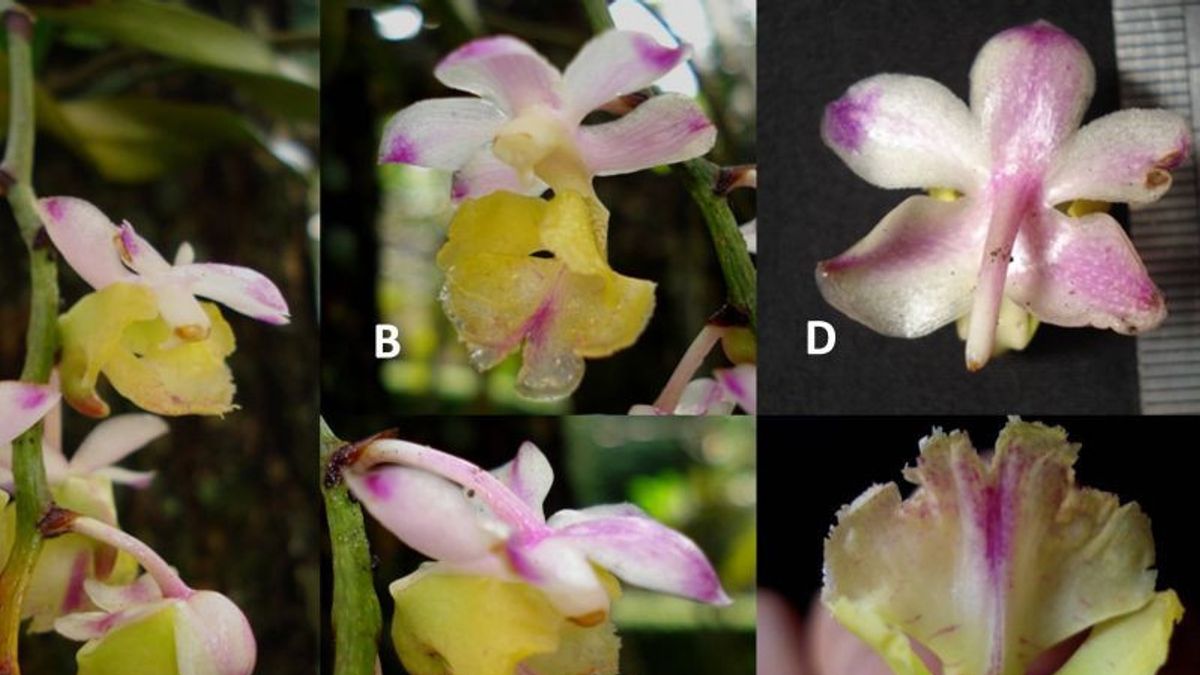JAKARTA - Research Center for Biosystematics and Evolution, National Research and Innovation Agency (BRIN) found new species orchids, which are endemic species from Sulawesi Island, Indonesia.
The discovery of the orchid species known as the cyclist with the local name the tiger nail orchid was published in the journal Edinburgh Journal of Botany in May 2024 as an orchid for Sulawesi's new endemic species under the name Aerides obyrneana.
"This new species has an attractive flower figure with a rare color combination in its genus, namely a asphalt and its petal is purplish white with bright yellow yellowish flower lips," said BRIN researcher Destario Metusala in a statement in Jakarta, Antara, Sunday, August 18.
Prior to the discovery of this new species, Destario explained that there were five Aerides species recorded from Indonesia.
Among them are the Aerides Odorata species that are widely spread in Sumatra, Java, Kalimantan, the Nusa Tenggara islands, to Sulawesi, the Endemic Aerides species, A. timorana, from the archipelago of Nusa Tenggara, as well as three other endemic species originating from Sulawesi, namely A. huttonii, A. inflexa, and A. Thibautiana.
Destario revealed that the name obyrneana in this new species was taken from the late Peter O’Byrne, an orchid observer and author of various orchid taxonomy references in Southeast Asia, especially Sulawesi.
This new species, he explained, lives in its natural habitat epiphytically, which is growing to stick to the surface of trees, but is not parasitic in nature that harms the host tree. Orchid size is also not too large, with leafy stems only about 10-16 cm high.
"The page is milling long like a ribbon with a span of 4-13 cm. It has several roots that are 60 cm long with the function of absorbing moisture from the air and from the skin of trees, as well as a place to store water reserves," he said.
When it blooms perfectly, said Destario, the flower is about 2.4-2.6 cm wide. Sepal and petal flowers are stiff and windy, the lips of the flower are tripled with the middle cup shaped wide like a split fan (flabellate) forming 4 rooms (lobules) with jagged edges.
"This Anggrek also has a curved flower chin (spur) and usually contains palm oil for pollinating insects," he continued.
The habitat for orchids Aerides obyrneana, said Destario, is in the form of semi-open forest edges with smooth air circulation and light intensity of around 50-70 percent.
By paying attention to the narrow elongated morphology of the leaves, having a fairly thick leaf network, and a curating upper surface, he said, it can be seen that these orchids seem adaptive to low humidity environments, as well as high temperature and light intensity.
Based on current distribution data, Destario emphasized that the Aerides obyrneana orchid is considered an endemic Sulawesi species with a limited range of natural distribution. For this reason, the conservation status of this new species is proposed to fall into the critical category (Critically Endangered) based on the IUCN (International Union for Conservation of Nature) Redlist.
"Therefore, it is important to cooperate with various parties, including from the hobbyist community, to jointly carry out sustainable conservation efforts so that this wilderness jewelry does not go extinct," said Destario.
SEE ALSO:
The English, Chinese, Japanese, Arabic, and French versions are automatically generated by the AI. So there may still be inaccuracies in translating, please always see Indonesian as our main language. (system supported by DigitalSiber.id)
Most Popular Tags
#Prabowo Subianto #New Year #airplane accident #Hasto Kristiyanto #nataru #squid game 2Popular
31 Desember 2024, 05:24
31 Desember 2024, 05:00
31 Desember 2024, 04:00
31 Desember 2024, 00:04
31 Desember 2024, 08:00
















